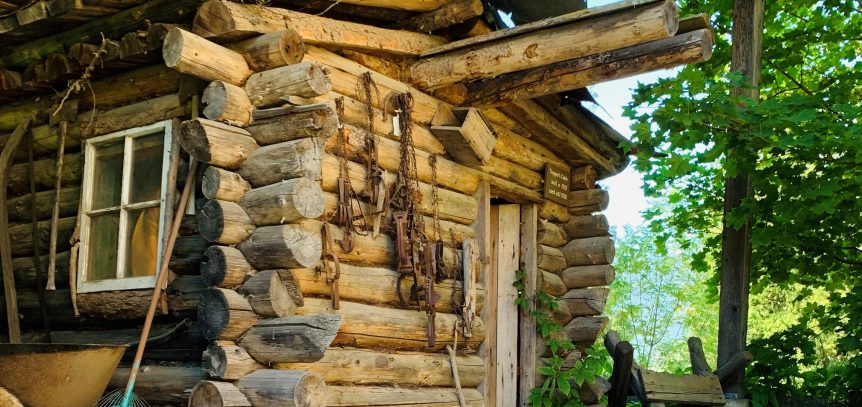
The Trapper Cabin remodeling project, being completed by summer student Ayla Harris, is finally underway!
This summer Ayla will be working on renewing and improving the Trapper Cabin exhibit. There will be a complete overhaul of the interior and exterior displays of the cabin along with information and photos of both the Trapper Cabin, at the Creston Museum, and Jordan’s Cabin, which was located along the East side of the Kootenay Pass summit.
We will be posting ‘work in progress’ photos and exhibit updates throughout the summer months as this local favourite gets a major upgrade. So stay tuned as we work on this wonderful piece of history.
Trapper Cabin:

The Trapper Cabin on display was one of many smaller cabins used for short overnight stays to help navigate the long traplines laid down along the mountainside. With the help of these ‘stopover’ cabins, the trappers could cover more ground, lay more traps and collect more furs during the cold winter months.
In 1928 Tom Mountford bought trapline #406T002 from Charlie Penson and began using the trapper cabins for his newly acquired trapping route. Tom shared his cabins for a few years with Wally Johnson; you can still see the pencil notes left to each other above the inside door frame. The cabins allowed a comfort stop and communication station as the men often worked the traplines at different times. Tom and Wally could let each other know of possible dangers, number of furs collected and other important details one would be concerned about while out in the wilderness alone. Tom managed this line until he was 90 years old; and in 1987 he finally moved on from the world of trapping, selling it to Fred Chappell. The Trapper Cabin was most likely used by Tom until Fred Chappell turned it over to the Creston Museum in about 1988.
Jordan’s Cabin:

Ed Jordan took over the cabin of Edward Peters “Pete the Packer” in 1923. The cabin was well built and had easy access to resources needed: water, firewood, and hunting and trapping lines. Ed Jordan stayed at the cabin year round; beginning with trapping and packing supplies for Bayonne Mine. Once the mine closed in 1929 Ed spent his time gardening and prospecting in the summer months. During the summer he would make a trip down to Creston every two months to restock his supplies. In the winter months he continued trapping, travelling between smaller cabins to maintain and collect on his long trap lines. At the age of 67 years Ed Jordan had an accident while working on one of his cabins and being too far out of reach for help passed away in his main cabin on the 27th of August, 1942.
For more information on Ed Jordan and his cabin visit, https://crestonmuseum.ca/jordans-cabin/
Thank you:
The Creston Museum would like to thank Ted Lapins for his construction of the mannequin which has lived in the Trapper Cabin all these years. We would also like to thank Fred Chappell for the contribution of the Trapper Cabin. With ongoing support of the Creston Valley the Creston Museum can continue to bring history to life.

